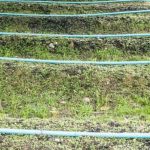Winter cover crops for vegetable gardens are an essential part of sustainable gardening practices, especially during the colder months. As the growing season comes to a close, it is crucial to protect and nourish the soil for the next planting season. In this article, we will explore the benefits of using cover crops in vegetable gardens during winter, the best cover crops for winter, how to plant and care for them, as well as maximizing their benefits.
During winter, many vegetable gardens are left bare and vulnerable to erosion and nutrient depletion. Winter cover crops offer a solution by protecting the soil from harsh weather conditions and providing organic matter to improve soil structure. Additionally, they help with weed suppression and reduce pest pressure, making them an indispensable tool for maintaining healthy soil throughout the winter months.
In this comprehensive guide, we will discuss the best cover crops for winter in vegetable gardens, including their specific benefits and ideal planting times. Understanding which cover crops thrive in cold temperatures and how they can contribute to soil health is vital for successful winter gardening. With proper knowledge of suitable varieties, gardeners can make informed decisions on which cover crops will best suit their specific needs and climate conditions.
Benefits of Using Cover Crops in Vegetable Gardens During Winter
When the winter season arrives, many vegetable gardens may go dormant as the cold weather sets in. However, this does not mean that your garden needs to sit idle during the winter months.
One of the best ways to maximize your garden’s potential even in the colder months is by using winter cover crops for vegetable gardens. These cover crops offer a range of benefits that can not only improve the health of your soil but also provide a variety of advantages for your garden as a whole.
Soil Enrichment and Nutrient Replenishment
One of the primary benefits of using winter cover crops in vegetable gardens is their ability to enrich the soil and replenish essential nutrients. During the winter, when many plants are not actively growing, cover crops continue to take up nutrients from the soil and store them in their biomass.
When these cover crops are eventually incorporated back into the soil, they release these nutrients, making them available for subsequent plantings in the spring. This process helps maintain and even improve the fertility of your garden’s soil.
Weed Suppression
Another significant benefit of using winter cover crops is their ability to suppress weeds. By planting cover crops that form dense canopies or have vigorous root systems, you can effectively smother out weed growth during the winter months. This not only reduces competition for resources between weeds and your desired vegetable plants but also minimizes the need for manual weeding come springtime.
Preventing Soil Erosion
During dormant periods, soil erosion can become a concern in vegetable gardens, particularly if heavy rainfall or strong winds occur. Winter cover crops help mitigate this issue by covering and protecting the soil surface with their foliage and roots. The dense root systems of certain cover crops also help bind soil particles together, reducing erosion caused by water runoff. By incorporating these cover crops into your garden plan, you can help maintain healthy, stable soil throughout the winter season.
By utilizing winter cover crops for vegetable gardens, you can enjoy numerous benefits that enhance soil health, reduce maintenance efforts, and facilitate successful harvests in subsequent seasons.
Best Cover Crops for Winter in Vegetable Gardens
When it comes to choosing the best cover crops for winter in vegetable gardens, there are several options that can provide numerous benefits. One popular choice is winter rye, which is a hardy and fast-growing cereal grain that can protect the soil from erosion and suppress weeds during the winter months. Another excellent option is crimson clover, known for its ability to fix nitrogen into the soil, improving its fertility for the upcoming growing season.
Winter Rye
Winter Rye is a popular choice for winter cover crops in vegetable gardens due to its hardy nature and ability to protect the soil from erosion. It also has a deep root system that helps break up compacted soil, allowing for better water absorption and improved soil structure.
Crimson Clover
Crimson clover is another top pick for a winter cover crop in vegetable gardens. This legume not only provides excellent ground cover but also fixes nitrogen into the soil, making it an ideal choice for improving soil fertility over the winter months.
Hairy Vetch
Hairy vetch is another fantastic option for a winter cover crop in vegetable gardens. It has an extensive root system that can help improve soil structure and enhance water retention. Additionally, hairy vetch can add organic matter to the soil as it decomposes, further enriching it for future plantings.
By carefully selecting and planting these winter cover crops for vegetable gardens, gardeners can ensure their plots remain healthy over the colder months while setting the stage for bountiful harvests in the coming year.
How to Plant Winter Cover Crops in Vegetable Gardens
Planting winter cover crops in your vegetable garden is a great way to improve the soil and prepare it for the next growing season. When choosing which cover crop to plant, it’s important to consider your specific climate and the needs of your garden. Some popular options for winter cover crops include winter rye, crimson clover, and hairy vetch. These crops can help prevent erosion, suppress weeds, and add nutrients back into the soil.
To plant winter cover crops in your vegetable garden, start by preparing the soil. Clear any debris or existing plants from the area where you plan to plant the cover crop. Loosen the soil with a tiller or garden fork to create a good seed bed. Depending on your chosen cover crop, you can either broadcast seeds by hand or use a seed spreader for more even distribution.
Once the seeds are sown, lightly rake them into the soil and water the area thoroughly. It’s important to keep the soil consistently moist until the cover crop has established itself. Depending on your location and climate, you may also need to protect newly planted cover crops from frost or extreme cold temperatures.
When planting winter cover crops in your vegetable garden, it’s important to choose varieties that will thrive in your specific climate and growing conditions. By selecting the right cover crop for your garden and following proper planting techniques, you can reap numerous benefits for both your soil and future vegetable harvests.
| Winter Cover Crop | Benefits |
|---|---|
| Winter Rye | Erosion control, weed suppression |
| Crimson Clover | Nitrogen fixation, weed suppression |
| Hairy Vetch | Nitrogen fixation, improves soil structure |
Maintenance and Care for Winter Cover Crops
When it comes to maintaining and caring for winter cover crops in vegetable gardens, there are a few key steps to keep in mind to ensure a successful outcome. Here are some important tips to consider:
1. Watering: While winter cover crops generally require less water than summer crops, it’s still important to monitor soil moisture levels, especially during dry periods. Make sure to provide supplemental watering if necessary, but be mindful of not overwatering as this can lead to issues such as root rot.
2. Weed Control: Keeping the area around winter cover crops free from weeds is crucial for their health and development. Regular weeding or mulching can help prevent unwanted competition for nutrients and sunlight.
3. Soil Testing and Fertilization: Before planting winter cover crops, it’s a good idea to conduct a soil test to determine the nutrient levels and pH of the soil. Based on the results, you can then amend the soil with organic fertilizers or compost as needed to support the growth of the cover crops.
4. Pest Management: While winter may see a decrease in pest activity, it’s still important to monitor for any signs of pests that could potentially damage your cover crops. Implementing integrated pest management practices such as crop rotation and using natural predators can help keep pest populations in check without resorting to chemical pesticides.
By implementing these maintenance and care practices, you can ensure that your winter cover crops for vegetable gardens thrive and provide numerous benefits for your garden’s overall health and productivity.
Maximizing the Benefits of Winter Cover Crops for Vegetable Gardens
When it comes to maximizing the benefits of winter cover crops for vegetable gardens, there are several key strategies that gardeners can implement. One of the most effective ways to do this is by carefully selecting the right cover crops for their specific garden needs. By choosing cover crops that not only protect the soil but also add nutrients, gardeners can ensure that their vegetable beds will be primed and ready for a successful growing season come spring.
Another important aspect of maximizing the benefits of winter cover crops is proper maintenance and care throughout the colder months. This includes regular monitoring of the cover crop’s growth and health, as well as providing any necessary supplemental water during dry periods. Additionally, it’s essential to stay on top of any potential pest or disease issues that may arise, as healthy cover crops will contribute more effectively to overall soil health.
Furthermore, a great way to maximize the benefits of winter cover crops is by incorporating them into a larger crop rotation plan. By strategically rotating different types of cover crops throughout the year, gardeners can diversify the nutrients added to their soil and break pest and disease cycles. This not only enhances the overall health of the garden but can lead to increased yields and healthier plants in subsequent growing seasons.
- Choose cover crops that protect the soil and add nutrients
- Maintain and monitor cover crop growth and health
- Incorporate winter cover crops into a larger crop rotation plan
Case Studies
One success story of using winter cover crops for vegetable gardens is the experience of a farmer named Sarah. Sarah had been struggling with poor soil quality in her vegetable garden, leading to stunted growth and low yields. After researching the benefits of winter cover crops, she decided to try planting a mix of clover and rye as a cover crop during the off-season.
The following spring, Sarah was amazed at the transformation in her garden. The soil texture had improved significantly, and her vegetable plants were thriving with increased vigor and productivity. Sarah’s success story highlights how winter cover crops can effectively improve soil health and ultimately lead to better vegetable yields.
Another inspiring story comes from a community garden in an urban area that implemented winter cover crops in their plots. Community members had noticed declining soil fertility and increasing pest problems in their shared vegetable garden. To address these issues, they collectively decided to sow a combination of vetch and oats as a winter cover crop.
When spring arrived, the community garden was abuzz with excitement over the noticeable decrease in pest damage and the substantial increase in crop harvests. The success of this community garden demonstrates how winter cover crops can not only benefit individual gardens but also have a positive impact on larger, communal growing spaces.
The experiences of Sarah and the community garden illustrate the diverse benefits that come from incorporating winter cover crops into vegetable gardens. From soil enhancement to pest management, these stories exemplify how thoughtful planning and utilization of cover crops during the winter months can lead to significant improvements in vegetable garden productivity. These successful case studies serve as valuable examples for other gardeners looking to maximize the potential of their own vegetable gardens through the use of winter cover crops.
Harvesting and Managing Winter Cover Crops in Vegetable Gardens
Winter cover crops for vegetable gardens play a crucial role in not only protecting the soil during the winter months but also providing numerous benefits to the overall health and productivity of the garden. Once these cover crops have grown and served their purpose, it is important to know how to properly harvest and manage them to prepare for the next planting season.
When it comes to harvesting winter cover crops, timing is key. It is essential to wait until the cover crops have reached their peak biomass, usually in early spring before they start to flower and set seed. At this point, they can be cut down and left on the surface of the soil as a mulch that will slowly break down and enrich the soil with nutrients.
In terms of managing winter cover crops, it is important to properly incorporate them into the soil to maximize their benefits. This can be done by using a garden fork or a rototiller to mix the cover crop residue into the top few inches of soil. This process not only adds organic matter but also improves soil structure and increases microbial activity, ultimately leading to healthier plants in the upcoming growing season.
| Cover Crop | Benefits |
|---|---|
| Winter rye | Excellent weed suppression, good cold tolerance |
| Hairy vetch | Nitrogen fixation, adds organic matter |
| Crimson clover | Attracts beneficial insects, suppresses weeds |
Conclusion
In conclusion, winter cover crops are a valuable and important aspect of maintaining a healthy and productive vegetable garden during the winter months. As discussed, they offer numerous benefits such as preventing soil erosion, adding organic matter and nutrients to the soil, suppressing weeds, and providing habitat for beneficial insects.
By incorporating cover crops into your winter gardening routine, you can improve the overall health of your soil and set the stage for successful vegetable crops in the upcoming growing season.
When selecting the best cover crops for winter use in your vegetable garden, it is important to consider factors such as climate, soil type, and specific goals for your garden. Popular options include legumes like clover and vetch, as well as grasses such as rye or barley. These choices offer different advantages and can be tailored to meet individual garden needs.
To successfully plant and manage winter cover crops in your vegetable garden, it is essential to follow proper planting techniques, provide adequate care throughout the winter months, and carefully plan for their incorporation into your overall gardening strategy. By doing so, you can maximize their benefits and ensure a successful transition into the spring growing season. Ultimately, utilizing winter cover crops in vegetable gardens is a sustainable practice that contributes to long-term soil health and overall garden productivity.

If you’re looking to get into vegetable gardening, or are just looking for some tips on how to make your current garden better, then you’ve come to the right place! My name is Ethel and I have been gardening for years. In this blog, I’m going to share with you some of my best tips on how to create a successful vegetable garden.





